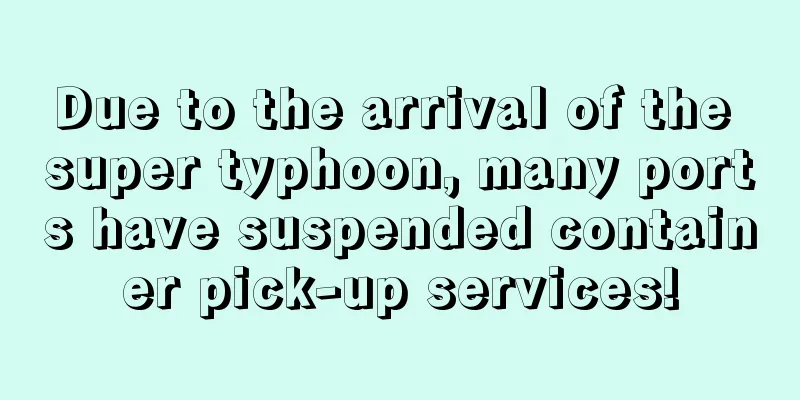What is TRO? TRO Review, Features

|
TRO stands for Temporary Restraining Order, which is a temporary injunction. In an emergency, a temporary injunction is issued before the court hears the plaintiff's request for a preliminary injunction, in order to prevent the plaintiff's rights from being immediately and irreparably damaged. It requires the parties to maintain the status quo or prohibit certain actions. About TRO The validity period of a TRO is generally 14 days. From the time the right holder files a lawsuit to the time the TRO is issued, the court will not notify the merchant of any information. And when the merchant receives the TRO, the store is usually frozen. Generally speaking, the reason why merchants are unable to respond to TROs is that the evidence requirements for the plaintiff's lawsuit are very sufficient and strict. Conditions for the Court to Issue a TRO 1. The plaintiff provides sufficient evidence to prove that the plaintiff is likely to win the case. 2. The applicant faces irreparable damage. 3. The damage caused to the defendant by issuing an injunction is far less than the damage caused to the plaintiff by not issuing an injunction. 4. The defendant’s actions are detrimental to the public interest (most of the merchant’s products are counterfeit). Features 1. A TRO is a writ issued by the court based on a unilateral request by one party without hearing the other party’s opinion. From the perspective of equity, it places relatively high requirements on the significance of the infringement, the irreparability of the losses caused by the infringement, and the urgency of issuing an injunction. 2. Unless there are extremely special circumstances, the validity period of a TRO is no longer than 14 days from the date of its entry into force. During this period, the court will, upon application by the plaintiff, require the defendant to explain the reasons for not issuing a preliminary injunction. If the defendant does not respond or does not respond sufficiently, the court has the right to directly issue a preliminary injunction and decide whether to issue a permanent injunction after a trial. 3. A written response to the plaintiff is the formal way for the defendant to apply to the court to revoke the TRO. 4. The applicant must provide corresponding security, and the specific amount shall be determined by the court according to the circumstances of the case. Target customers The TRO applies to alleged infringers (defendants) as well as third-party service providers, such as Alibaba, and financial institutions, such as banks and payment processors, that provided some services in the alleged infringement. Require A TRO typically prohibits the defendant from: continuing to engage in any infringing conduct, including selling or advertising allegedly infringing goods, destroying records related to the plaintiff’s claim, and transferring financial assets that could be used for judgment. A TRO also typically prevents third parties (such as Alibaba) from providing services to the alleged infringer and may prevent asset freezes that would prevent the transfer of funds from accounts associated with the alleged infringer (even if the accounts are not located in the United States). Finally, a TRO typically requires defendants and third parties to provide the plaintiff with documents related to the plaintiff’s claim (such as contact information, bank account records, and sales records), even if they are located outside of the United States. How to deal with it 1. Determine whether there is actual infringement, the circumstances of infringement and the extent of infringement 1. Product keyword description infringement Word trademark infringements are mostly common industry names or daily modifiers. 2. Product pattern infringement (graphic trademark, copyright, appearance patent) Here we take the "Peppa Pig Infringement Case" as an example. As long as a business prints a Peppa Pig pattern on a product, it is likely to be complained about. Of course, in addition to the pattern, using "Peppa Pig" to describe the product is also an infringement. 2. Entrust a lawyer to reach an out-of-court settlement with the other party’s lawyer 1. Consequences of not reconciling (not dealing with) The lawsuit still reserves the right to continue prosecution. When a Paypal account or other payment account associated with the defendant's store and URL is found, the right to continue to freeze the deduction and take other response measures. 2. Will there be another complaint of infringement after the settlement? The “Effective Date” in the Settlement Agreement is the effective date of the Settlement Agreement, which is to resolve all infringements alleged to have been committed by the Defendant in the lawsuit prior to the effective date of the Settlement Agreement. III. Settlement Procedure The client fills out the settlement information collection form, and the lawyer makes a simple assessment and gives the client a feedback result. Sign the contract and pay the fee. Email or call the other party’s lawyer to indicate that we are representing the client in the case. · The lawyers of both parties negotiate and keep synchronous communication with the client. · After reaching a settlement agreement, pay the claim amount. The opposing lawyer will send the letter of withdrawal to the platform, unfreeze the account, and release the funds. IV. Other litigation procedures 1. If the amount of frozen funds in the account is very large, and the actual infringement is very minor or there are certain false accusations, it can be handed over to a lawyer for evaluation. 2. If there is a possibility of winning the case, or the statutory damages (generally between US$1,000 and US$200,000) plus the attorney fees are far less than the frozen funds in the account, it is recommended to actively respond to the lawsuit. 5. Official Recommendations Official advice on how to handle a TRO: 1. Try to determine the scope of the TRO by contacting an attorney in the United States. 2. Contact lawyers to try to change the judgment in the lawsuit and find other loopholes. 3. Communicate with the brand owner’s lawyers and negotiate a solution to return to the platform and resume operations. |
<<: What is Outdoor Voices? Outdoor Voices Review, Features
>>: What is IndiaMART? IndiaMART Review, Features
Recommend
Amazon to test automated checkout technology
Amazon announced on Wednesday that it will introd...
What is Jubao Power? Jubao Power Review, Features
Jubao Power Technology Co., Ltd., referred to as &...
Many BS products have had fake reviews for nearly two years, but Amazon didn’t notice it?
As we all know, Amazon has been cracking down on ...
What is Billbee? Billbee Review, Features
Billbee specializes in simple multi-channel softwa...
What is Oral-B? Oral-B Review, Features
Oral-B is a brand of toothbrushes and other denta...
110,000 pieces sold in two days! Another big hit overseas
In recent years, more and more domestically produ...
93% of Amazon sellers suffer revenue loss due to supply chain issues
Despite the chaos in the U.S. supply chain in 202...
What is Bonobos? Bonobos Review, Features
Founded in 2007 and headquartered in New York, Bo...
What is Translead Group INC? Review, Features
The Hengguangda Overseas Warehouse in the United S...
The maximum fine is 350,000 yuan! Amazon and the FTC are cracking down
Both Amazon and the Federal Trade Commission (FTC...
Amazon launches new marketing tool, sellers are expected to see a surge in orders during the peak season
Recently, Amazon announced that the new feature “...
Amazon launches account protection plan, sellers: should it be blocked or not?
It is reported that Amazon officially issued an a...
Half-year revenue exceeded 5 billion, and many top-selling products ranked among Amazon's BSR!
When it comes to home renovation and house repair...
Kakao's sales reached 1.25 trillion won! The first quarter achieved the highest performance in history
In the first quarter of this year , Kakao set a n...
During the period of Indonesia's PPKM control, the Blibli platform is ready to go!
Blibli is one of the e-commerce platforms in Indo...









